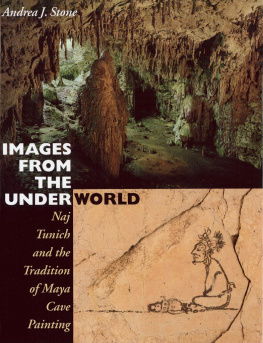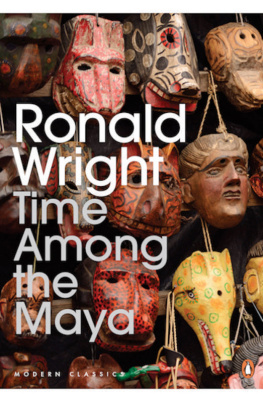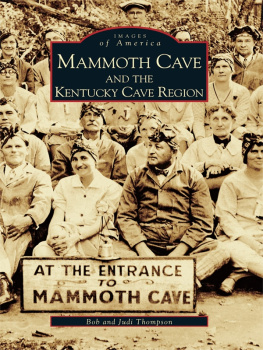IMAGES FROM THE UNDERWORLD
Images from the Underworld
NAJ TUNICH AND THE TRADITION OF MAYA CAVE PAINTING
Andrea J. Stone


UNIVERSITY OF TEXAS PRESS
AUSTIN
Published with the assistance of the Getty Grant Program
Copyright 1995 by the University of Texas Press
All rights reserved
Printed in the United States of America
First edition, 1995
Requests for permission to reproduce material from this work should be sent to Permissions, University of Texas Press, Box 7819, Austin, TX 78713-7819.
Library of Congress Cataloging-in-Publication Data
Stone, Andrea J.
Images from the underworld : Naj Tunich and the tradition of Maya cave painting / Andrea J. Stone 1st ed.
p. cm.
Includes bibliographical references (p. ) and index.
ISBN 0-292-75552-X (acid-free paper)
1. Naj Tunich Site (Guatemala) 2. Maya artGuatemala. 3. Maya paintingGuatemala. 4. Cave paintingsGuatemala. 5. MayasAntiquities.
F1435.1.N35S76 1995
972.81dc20
94-11145
ISBN 978-0-292-75648-9 (e-book)
ISBN 9780292756489 (individual e-book)
Dedicated to the memory of Michael DeVine, who played a key role in the discovery and exploration of Naj Tunich
Acknowledgments
A study of this kind, involving research in three countries and evolving over more than a decade, could not have materialized without the support of many individuals and institutions to whom I am deeply grateful. I am most indebted to my colleagues who worked alongside me in the field, above all James and Sandra Brady, who in some sense inspired this study by inviting me to work at Naj Tunich in 1981. I am fortunate for having had the opportunity to collaborate underground with George Veni, who has over the years shared his vast knowledge of caves with me. Chip and Jennifer Clark also made a major contribution to this study with their superb photographs of the Naj Tunich paintings, taken, I might add, under extremely difficult conditions, such as the fifteen-hour workdays they endured with never a grumble. Others with whom I worked at Naj Tunich include Bernab Pop, who was especially helpful in the early days of exploration. I immensely enjoyed working alongside Vivian Broman de Morales, Miguel Orrego, and John Pitzer in 1981, and Dacio Castellano and Tito Sandoval Segura were welcome additions to our 1988 expedition. Others who donated their time and energy in the field include Patty Mothes, Roy Jameson, Thomas Miller, Mark Johnson, Elizabeth Williamson, Jos Aban Campos, Allan Cobb, and Karl Taube. I apologize to Ron Jameson for permit problems in 1987 that botched a planned photographic project.
In the early days of Naj Tunich exploration we often stayed on Emilio Pops farm, known as La Compuerta. Emilio filled us every morning with greasy eggs and every evening with his homespun humor. I am grateful for having had the privilege to know him.
Matthias Strecker, one of the most generous scholars I have ever known, played a pivotal role in this study by offering me, unsolicited, much of his unpublished research on Maya caves. He continues to be my window onto the world of Latin American rock art. Gary Rex Walters was kind enough to host me at his Laguna Village camp and give me free access to his data. Veronique Breuil also did not hesitate to share her survey data from Yucatan and Campeche.
The first draft of this manuscript was written in 19861987 at that oasis of pre-Columbian studies, Dumbarton Oaks. I was fortunate to have spent my fellowship year with co-Mesoamericanists Janet Berlo, Flora Clancy, Karl Taube, and Bruce Love, all of whom freely shared their ideas and friendship. A grant from the Graduate School of the University of WisconsinMilwaukee made possible additional time for writing. Grants for fieldwork were provided by the National Geographic Society, the Tinker Foundation, and the Center for Latin America of the University of WisconsinMilwaukee. I am especially grateful to the Center for its constant, generous support. I would also like to thank George Stuart of the National Geographic Society for his unflagging interest in cave research.
The cooperation of the Instituto de Antropologa e Historia de Guatemala was essential to this project, and I thank the two directors with whom I dealt, Leopoldo Colom Molina and Francis Polo Sifantes. Many other staff members of the IDEAH generously worked on my behalf. I was also assisted by various members of the Centro Regional de Yucatn del Instituto Nacional de Antropologa e Historia. Their successive directors, Rubn Maldonado Crdenas and Alfredo Barrera Rubio, are owed special thanks. I am also grateful to the Middle American Research Institute at Tulane University for use of its archives.
Several individuals commented on various draft chapters of the manuscript. For this, I would like to thank Paul Bahn, Nikolai Grube, Stephen Houston, Virginia Miller, Dorie Reents-Budet, Karl Taube, James Brady, and any others whom I have unwittingly forgotten. Alison Tartt, of the University of Texas Press, did an admirable job of editing the end product. Clemency Coggins wrote what may have seemed like an endless stream of letters in support of this project to granting agencies. David Pendergast and Linda Schele also wrote supporting letters. Rosa Morales Carroll helped with the translation of Cataln.
I am grateful to a number of individuals who supplied photographs: Alfredo Barrera Rubio, Pierre Becquelin, Nicholas Hellmuth, Allan Cobb, Eldon Leiter, Margot Schevill, James Brady, and Matthias Strecker.
Several of my cohorts at the University of WisconsinMilwaukee assisted this project in a variety of ways. Donna Schenstrom of the Cartographic Laboratory helped prepare illustrations. Tom Phillip of the Computing Services Division provided hours of cool-headed troubleshooting. Lewis Schultz printed many of the photographic illustrations. My colleague in the Department of Art History, Jane Waldbaum, graciously assisted with Greek as well as many other of my inquiries.
I would like to single out for special thanks two friends who drew me into the world of caves by providing inspiration and opportunities, Thomas Miller and Barbara MacLeod. By letting me tag along on some of his cave expeditions in Belize, Tom guided me through some of the most memorable experiences of my life. Barbara, a phenomenally talented individual and the co-author of , has the most profound understanding of caves in Maya culture of anyone I have ever known. And to my parents, who nursed me back to health on more than one occasion after returning from the field, I express my love and gratitude, as always.
Finally, I want to acknowledge Michael and Carole DeVine, whose marvelous farm, Finca Ixobel, was the perennial starting point of our Naj Tunich expeditions. I have many wonderful memories of Mike, Carole, and their children Mara and Conrad, from playing croquet with their pet macaws flying overhead to riding around with Carole in her beat-up station wagon. The tragic murder of Mike DeVine in 1990 was a shock to all who knew and cared for him. It will always be difficult for me to comprehend this event, which hangs like a black cloud over the history of Naj Tunich, as Mike was one of the discoverers of the cave.
IMAGES FROM THE UNDERWORLD
I
Introduction
The paintings and drawings found in Maya caves, the subject of this book, form an intriguing chapter in the history of Mesoamerican art that has yet to be written. Cave art may well be one of the last great frontiers of Maya studies; and, in spite of a recent flurry of books, films, and popular articles on the ancient Maya, their cave art still remains little known to professional archaeologists and the public alike. Yet, owing to the perplexing nature of this art, it is not all that surprising to find it coming to light two hundred years after the dawn of research into Maya civilization. This diverse collection of figures, symbols, and even hieroglyphic writing, found in caverns from the southern highlands of Mexico to the remote Maya Mountains of Belize, was produced by individuals working by firelight with varying levels of skill and different motivations. Moreover, like their Paleolithic counterparts, they did not just decorate rock shelters and shallow caves but also created extraordinary works of art on the walls of deep caves, the kind with vast tunnels and spectacular geological formations.










